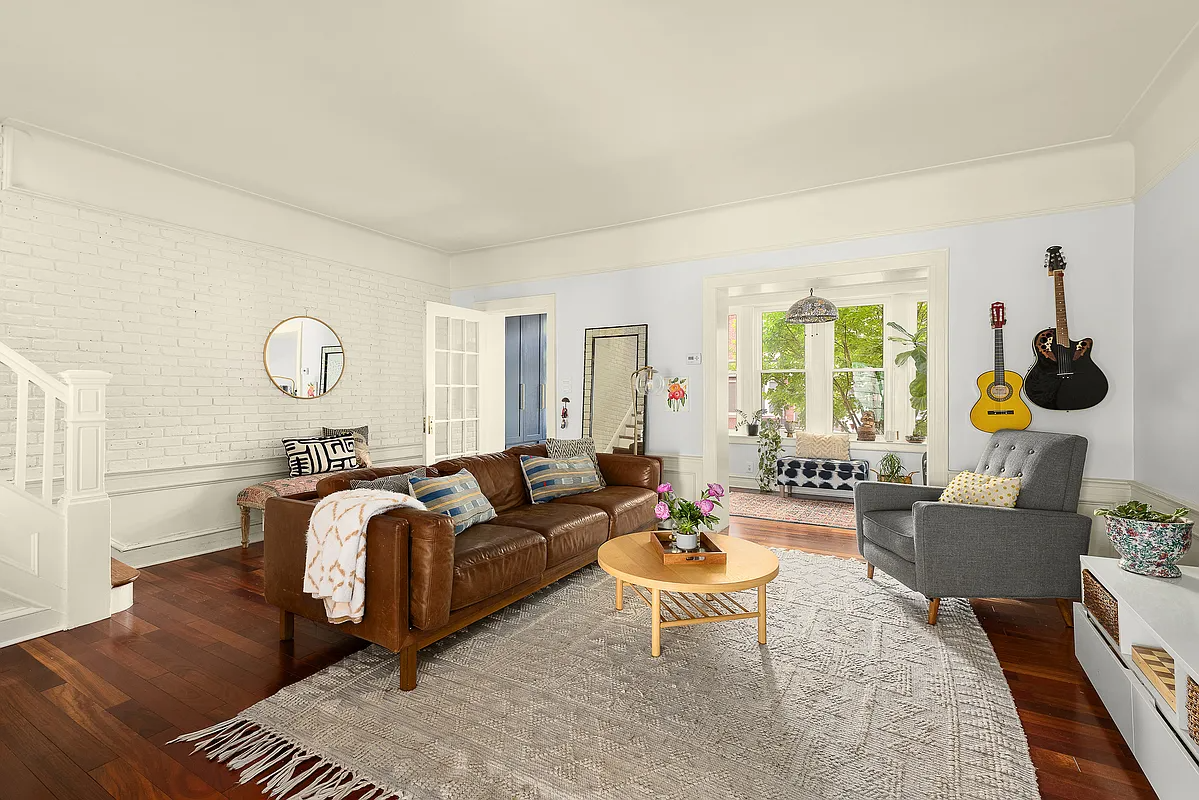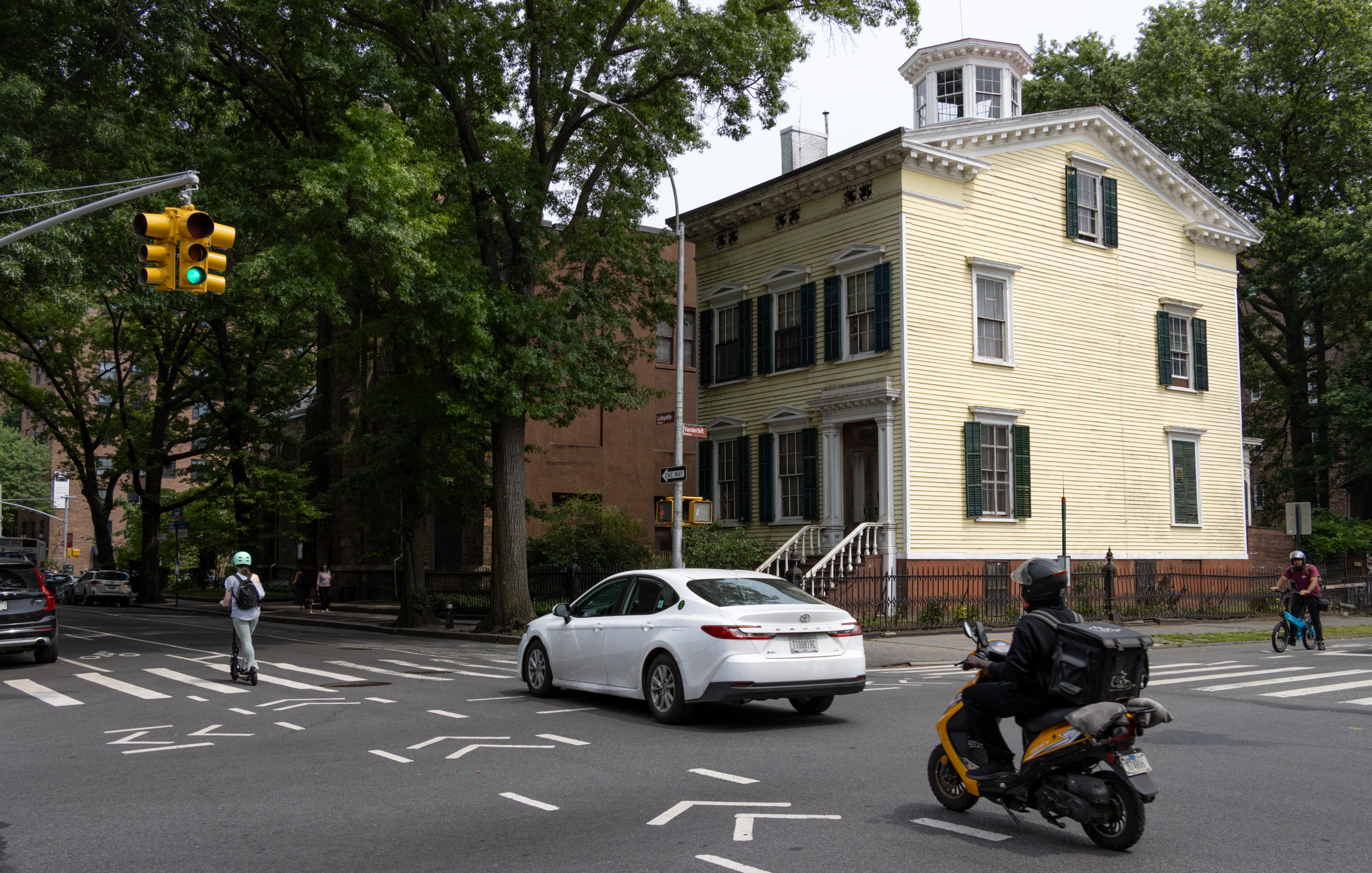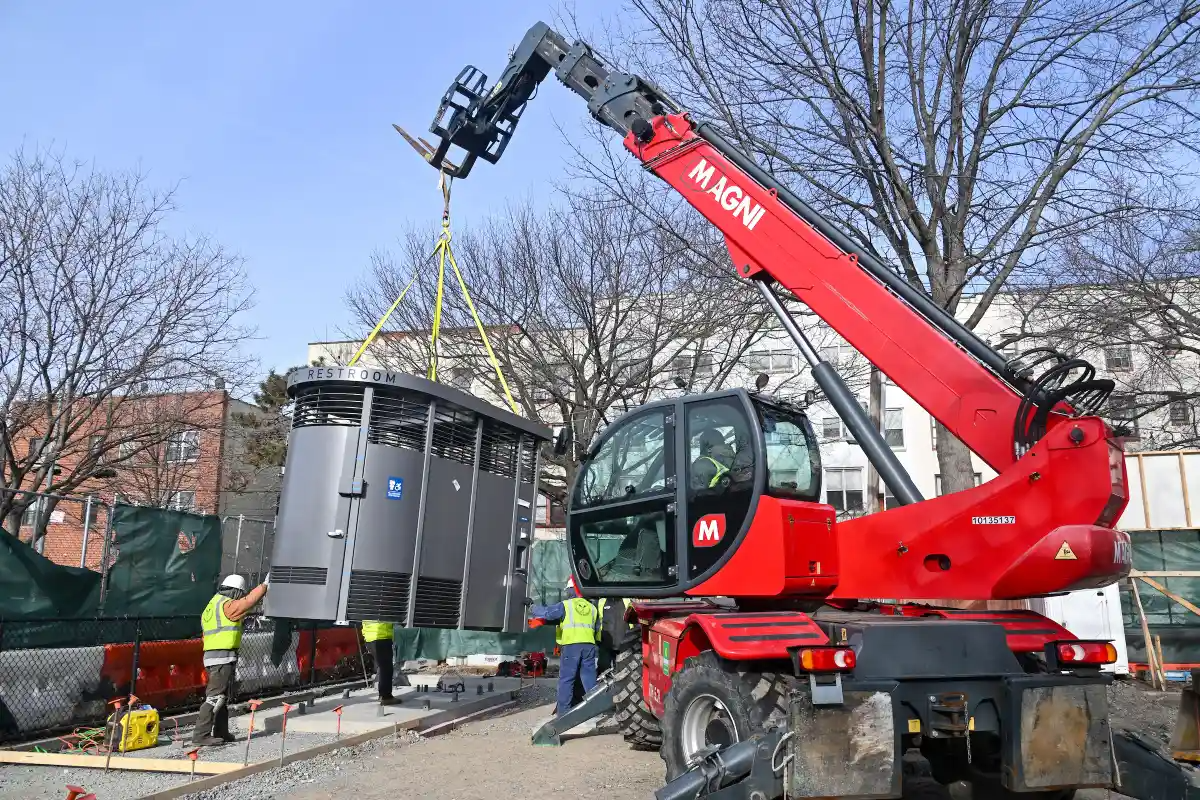Open House Picks: Six Months Later
Comment: Nice job on St. Marks Place; keep dreaming on Putnam. Open House Picks 5/09/08 [Brownstoner] Previous Six Months Later Posts [Brownstoner]


Comment: Nice job on St. Marks Place; keep dreaming on Putnam.
Open House Picks 5/09/08 [Brownstoner]
Previous Six Months Later Posts [Brownstoner]





I hear you. And, I realize that NONE of us can know what’s going to happen. There is no historical parallel to the current situation for all kinds of reasons – some of these reasons may buffer the downturn (NYC having less crime, Brooklyn having gentrified more, etc.) and others may exacerbate it (greatest financial crisis since the Depression). Anyway, as I’ve said repeatedly, I’m not expecting to buy a grand mansion in prime Park Slope for under a million dollars anytime soon, but I do think a return to 2004 prices, for example, is not inconceivable (and hence, smaller houses in the south slope, for example, could go back to selling for under a million). The one thing that everyone agrees on is that there will be further declines, but the degree and length of those declines are anyone’s guess . We simply are continuing to look actively, all the time, and bidding when we are serious, but are also very patient as we are fine for the moment in our economical rental and for sure, there’s no rush to buy.
MM, I think what Aussie, FLH and I are trying to tell you is that if you look to the early 90s and expect an exact parallel in Park Slope 321-land in the next few years, you will be sadly disappointed.
It’s worthwhile to remember that the New York of the late 80s and early 90s was a profoundly different place than it is today. There were over 2400 murders in 1992. Last year there were barely 500, a 40-year low. And there are a million more poeple in the metro region in that time. New York is ranked 51st in overall crime among major US cities. Crime was far, far worse at the time of the last real estate downturn than it is today. Whatever becomes of the local economy, that is unlikely to significantly change. Despite what some of the more nihilistic fantasists on this board seem to wish for, 1977 is not going to happen again.
Are you being deliberately obtuse? You know that people here are saying that the MARKET will fall by 50%. No one is saying that one foreclosure, sponsors unit, or other forced sale couldn’t occur where an individual property falls by up to 50%. These sales happen even in good times. I believe you will be able to find them in greater numbers now particularly if you are interested in a foreclosure.
Also I repeat the word “rare”. There was an 8 year oversupply of units at the end of the 80’s. There is not, and never will, an eight year oversupply of brownstones in the areas that you are looking in
Well, it was the last sponsor unit in the building and he wanted to unload it, so it was probably offered for a little less than it would have been otherwise, but, as I said, I didn’t know anything about real estate then–and I had no idea what others had paid until years later.
Also, W83rd St was definitely NOT “prime” then! Whooo, I used to call it the “wild west.” The Banana Republic on 86th and Broadway was a bank I never heard of that smelled to high heaven and never had any customers in it. What is now the Barnes and Noble and Talbots was all boarded up. I could go on.
That’s why I said history never repeats itself in precisely the same way.
But Dylanfan above points out that he bought a place in 1991 for 40K on the upper west side when similar apts in his building sold for 80K in late 80s. Are you saying upper west side was not prime? So, a 50% drop. Maybe statistically averaged, there was not a 50% drop but again, anecdotally, there were certainly plenty of steep drops (again, I know quite a few people who benefited from them at that time) in the last downturn.
I don’t have to account for it because it didn’t happen…not in prime areas. Statistics we’re city wide at best back then.
In any event citywide there was a 7 year oversupply glut at the end of the eighties and only 8 or 9 months worth now. That is a statistic you can check.
Have you read this:
http://www.businessweek.com/the_thread/hotproperty/archives/2007/10/biggest_decline.html
But Aussie, how do you account for 50% drops in prime areas of NYC last time there was a downturn (late 80/early 90s)? Also, what is considered “prime” is obviously open to debate. Sure, there are the grand streets of Brooklyn Heights and the Park block Park Slope mansions. But about South Slope? Where does that fit in? Just looking at Park Slope as an example, there is a core to it that would probably be considered indisputably “prime” – say the name streets within PS321 that are close enough to park and the express trains that they are highly desirable. But just about every other part of it has its detractors whether the architecture is less lofty (southern part, western part), schools are not as good (north of Union), etc. etc. For buyers like us, who are not looking for a very grand property (just one in a decent school zone), I do think the discounts could be significant since we don’t need one of those very fancy mansions. Anyway, I’ve been reading predictions on this blog for years about how NYC real estate is too rare, desirable etc to suffer a downturn, and now that it’s indisputably heading for a downturn, I think the bulls are reluctantly becoming bearish, albeit “less bearish” than those who’ve been thinking for a long time now that a correction was inevitable given the unsustainable, unprecendeted run-up.
Miss Muffett said: I am interested, however, in what the more bullish folks on this blog are predicting – Aussie, 11217, traditionalmod. Of course, by now everyone has conceded that some price drops are inevitable since to say otherwise really does seem delusional. And yet I’m surprised by the adamant insistence that they could not drop as much as 25-50%. So what do the more bullish people think – 10% max? 15%? I’m truly curious.
ANS: I would say I’m less bearish rather than more Bullish. I think 50% reductions in prime brooklyn where, for example, a FG house that would have sold for 1.8 now goes for 900,000 is extremely unlikely. Why?
There are a string of reasons all dependant on your view of certain things. If we could agree on these things (some assumptions as points of reference) then we may be able to construct a scenario based on these factual assumptions, that is a sensible model for what might actually happen in prime Brooklyn. Anything else in my view is simply a silly back and forth emotional argument based on your position as a seller or a buyer.
As creating such a model on this blog isn’t going to happen, I’ll be content with answering your question by repeating myself. I believe, there is no rush to buy. Prices will fall further. It might be by another 10-25% in the prime areas you are looking at. Credit will improve in the next 6 months but conditions will remain tight. They were never as loose in the prime brownstone market as elsewhere anyway. No more major banks will be allowed to fail. There will be a large number of additional lay-offs on Wall St, but lay-offs of key people (the type that pay 1.5 mil and up for a brownstone) will see proportionally less than number of lower ranking lay-offs. The incomes of people who remain employed will not drop significantly, except on Wall St where bonuses will be well down. Brooklyn will continue to gain in popularity. Prices will start to recover in NYC by the end of next year/ mid 2010. It will be a very slow recovery. I don’t see a capitulation by sellers in prime areas certainly not one that will bring about a 50% reduction. There is no reason for them to capitulate they wont be worried about their homes as much as their investments. Their other investments already look very bad in comparison to the investment they made in their homes. There will be less supply as people stay put and less demand as fear causes people hesitate to enter the market. In short, less turnover with a slow drift lower. There will be people that have to sell for divorce and job losses etc but I think the inventory will remain low in prime areas because people that don’t have to sell will not (generally speaking) go from owning to renting just to save a buck. I know some people on this blog did but I think most are of the same view as me. A brownstone is part investment but mainly a home. Importantly there will be way less foreclosure in prime areas. A map of preforeclosures on realitytrac confirms this. Get a free one week subscription and look for yourself. Compare the prime areas with some areas of Bed Stuy.
The more bearish predictions that are made here will be correct but not in respect of Manhattan or prime Brooklyn and many other equivalent places, throughout the US, Europe and Australia.